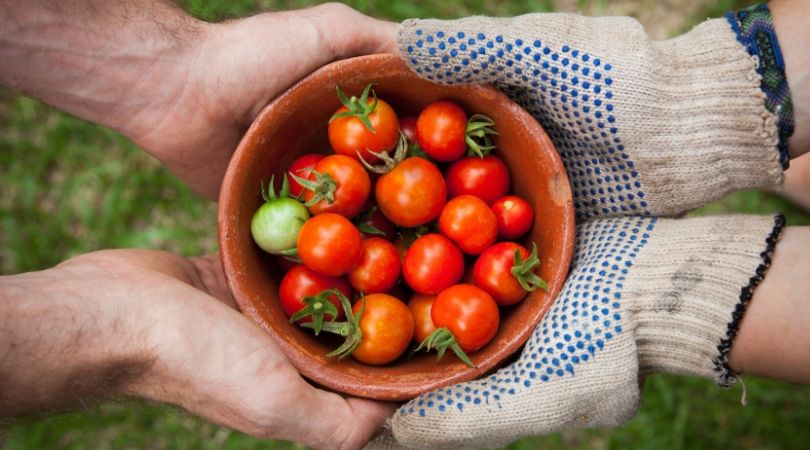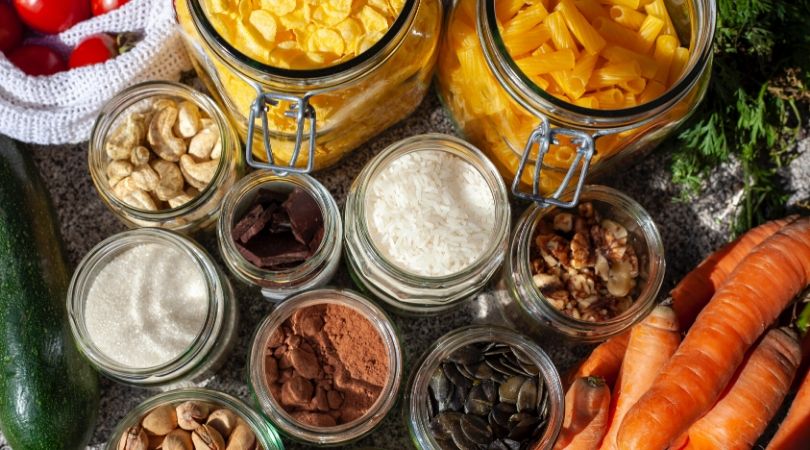In the context of sustainable and planet-friendly diets there are two things to consider. First, the impacts of diet to our overall health. Second, the impacts of diet to the planet and ecosystems well-being.
Fast population growth and rapidly growing wealthy population have resulted in heavy consumption of meat and dairy products, consequently eating up planet’s scarce resources. In addition to this, the impacts of climate change are jeopardizing the food supply chain. Rising temperatures worldwide connected with extreme weather conditions, floods, drought and storms, all affect to the well-being of farmlands. Dietary habits that support nutrition, livelihoods and the planet are necessary for tackling these challenges.
Since forever, a group of countries have set up official dietary guidelines each year, telling what we should eat. Some countries include sustainability in their dietary guidelines, some not. Today, the Internet and social media is full of different guides and guidelines concerning environmentally-friendly, plant-based and healthy diets that will transform the planet’s future. I find this quite confusing so I wanted to think about it a little bit further and slice it into more understandable pieces.
In general, eating more plants and less meat is something that most of us have captured already. Some of the approaches available do not necessarily respect much different cultural aspects around food and eating. However, there are general recommendations, I would say, based on common sense, that will force us to think a little bit more about food from the sustainability point of view. By following the four simple steps below, and challenging our habit system, we can reach easily a more sustainable and healthy diet.
1. Choose locally produced food

There is a saying “local is always the best”. Well, usually it is. On a vacation in a new city when you are looking for a nice place for a dinner, it’s a ground rule to not to go for that touristic area to search for that amazing, authentic restaurant experience. You will never find that there. Best thing to do, is to look outside and look for local. Have you ever been disappointed after eating in a small, local, often family owned place where everything is so fresh that you can smell the sea from the fish of the day? No, me neither.
Where you are located geographically affects a lot to your diet. Depending where you are in the world, your diet should consist of the seasonal ingredients of that specific location. Locally produced vegetables, fruits and crops are fresh, seasonal and usually pesticides free. The closer the food comes from, the less farmers need to use food preservatives and other chemicals to protect the food. If the food travels hundreds and hundreds of kilometers from another continent before arriving to your plate, it does require protection from contamination and damage during the transport. The further away the products are travelling from, the more emissions from transport are being created. The same happens with livestock farming. Consuming locally produced meat products is a more Eco-friendly option.
Alternatively, if you have a possibility to grow your own vegetables, fruits and herbs, that is probably the most planet-friendly and healthy option. In that way, you can be 100% sure how the greens you eat are cultivated and how they travel to your plate. You literally pick them up yourself.
The more there is demand for sustainably cultivated and produced food, the more agriculture will change towards this direction. At the end, the farmers have no other choice than to follow the sustainable production patterns. The purpose is to positively affect food safety and sustainable land use by respecting the ecosystem natural mechanisms.
2. Pay attention to the diversity of food and reduce one-sided eating

By the World Wildlife Forum (WWF), the lack of diversity in our diets causes a lack of diversity in nature. It also makes us not so resilient to pests or diseases in our food supply. Currently we get more than half of our plant-based calories from just three crops; rice, wheat and corn. Of the total calories intake, we get almost 75 per cent from only 12 crops and five animals.
By focusing on ensuring the variety of food we eat and food that is better and sustainably produced. A planet-friendly diet is not about eating that same salad from one day to the other. Adding diversity to our diets is important for preserving and restoring the diversity in the environment. One-sided diets lead to impoverishing farmlands in a faster pace, when only a few crops and vegetables are being farmed. Not everyone can eat exactly the same food. There must be some variety.
Diversified diets consist of sources of food that are nutritious and include fruits, vegetables, beans and animal source foods in balance. Making the balanced setting available, accessible, affordable and acceptable for all is the key. The role of planetary boundaries in diets has become evident. The limits of the planet must be respected in a systematic way. Otherwise, we might end up having a lack of certain nutrition and more critically lack of freshwater.
3. Avoid wasting the food

By the Food and Agriculture Organization of the United Nations (FAO), approximately one third of food produced is lost or wasted globally every year. This is a huge dilemma that requires both us individuals’ and businesses’ attention. Taken into account the limited resources the planet has, wasting them like this should not be possible in the first place
Food waste is linked with packaging waste. Buying food in just right packaging size for your needs can help decreasing the food waste. Similarly, by using fresh ingredients whenever possible, helps to reduce unnecessary packaging waste.
4. Seek nutritious and healthy diet for yourself

Nutritious diet does not mean the same kind of diet for all around the world. Thinking about where you are in the world, where does the food come from and where it is grown, should be the base of a sustainable and healthy diet.
Different countries (not all) have their own guidelines with recommended “plate models” and different ways in delivering the message. People have as well different needs and, for example, allergies or sickness can have a big effect to our diet. For instance, an ability to tolerate lactose and gluten have seemingly weakened in certain parts of the world. Moreover, making sure to get enough iron, C-, B12- and D-vitamins can be a challenge for people with difficulties to “store” them. Of course, nutrition adds can be used with a balanced diet.
“Less sugar and meat, more vegetables and fruits.” “Take proteins mostly from plants.” These are good touch bases. I believe in adapting a balanced diet where you feel good and which supports sustainable production and respects the planetary boundaries. Taking an extreme approach in diets as going for vegan, for example, is not necessarily associated with significantly lower environmental impacts when compared to more balanced diets in overall. The real plant-based diets do include both highly processed plant-based dairy and meat substitutes and also unprocessed plant-based foods with different levels of environmental impacts.
Conclusions
This weekend I will visit an Eco-farm in the central region of Malta. I am very excited to see sustainable agriculture in action. Also how the European Union Common Agricultural Policy (CAP) is being integrated into a small organic farm production. A new blog post dedicated to the visit is coming up later this weekend. You can find the Eco-farm visit post here.
After all, one question remains unanswered. Is sustainable and healthy diet just a trend or will it last? I believe that today and in the future we must think more where we are in the world, what is the origin of the food and concentrate on local, seasonal and sustainably produced nutrition. It is here to stay.
What do you think? Feel free to give your thoughts in the comments.


Well worth a read. Got great insights and information from your blog. Thanks.
https://naturaltemptation.com.au/